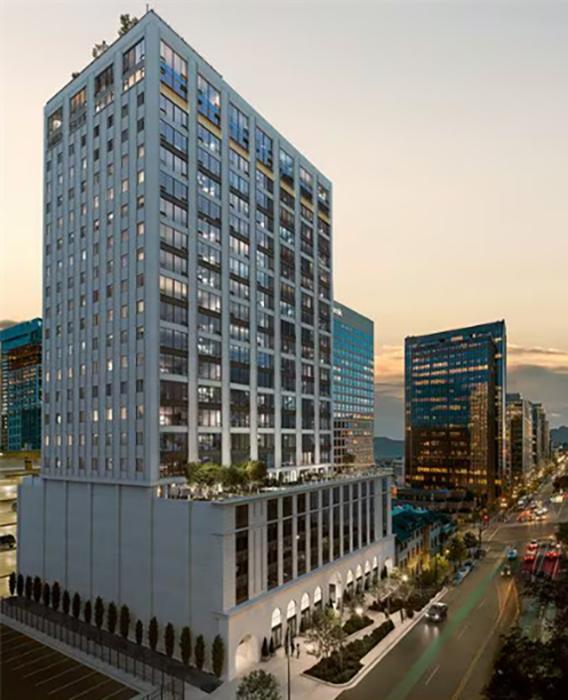Seraph at 136 East South Temple
Converting a midrise concrete office building to apartments offers a creative solution for Downtown Salt Lake City’s housing needs.
Overview
The midcentury modern office building known as South Temple Tower in Downtown Salt Lake City is being converted by developer Hines into luxury residential rentals. Rebranded as Seraph, the 24-story tower will offer 217 units, ranging from studios to three-bedroom apartments, many of which will feature expansive views of the skyline and the Wasatch Mountains beyond. Amenities will include a rooftop deck with fire pits and grill area, resort-style pool and hot tub, social lounge, fitness center, dog run, pet spa, bicycle storage and parking garage occupying levels two through seven.
We are providing structural design services to Hickok Cole for the project, which includes a one-level basement, two retail spaces, a lobby and back-of-house space. The building will feature new mechanical, electrical and plumbing systems tailored to its new residential use as well as larger, more modern glazing on the reimagined façades.
Here's how we are helping build Utah’s resilient future
Highlights
- Above level seven, the existing lateral system is a dual system consisting of cast-in-place concrete shear walls and a perimeter moment frame. Additional perimeter concrete shear walls are introduced below level seven.
- The conversion of level seven and the roof level to amenity spaces required reinforcing the existing structure to support increased loading; we introduced a field of under-slab steel beams to support these new loads.
- Our scope included developing a testing protocol for probes of existing structural elements and providing extensive field fixes for various unforeseen conditions requiring structural repair. Ground-penetrating radar scanning was performed to confirm that in-situ rebar matches the original structural drawings.
- Repurposing an existing concrete building instead of constructing a new, ground-up concrete and steel one of similar size significantly reduced CO2 emissions and energy usage.


